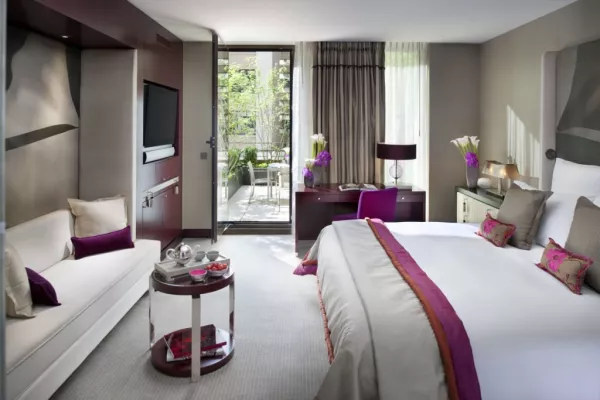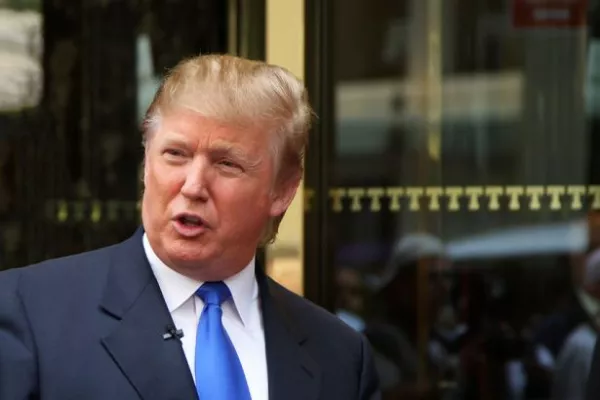I’m battling my way through the pungent masses of Times Square in August when I’m suddenly transported: a cliff jump into a turquoise cove, fiery sunsets from a hotel balcony, fire-twirlers beneath the stars. The vivid memories flash rapidly through my mind, stopping me in my tracks. The trigger? The scent of lemongrass drifting from the windows of a Thai restaurant.
I took hundreds of photos in Southeast Asia. I brought back piles of silks. But nothing brings me to that time and place more viscerally than the tangy scent of lemongrass.
The nose, it turns out, is the fastest way to the heart. And hotels these days have caught the scent, commissioning signature fragrances that they hope will transport guests long after their stays.The Science of Smell
Strong, sensitive, and always flying under the radar, smell is the Superman of the senses. You may think you understand the world primarily through sight or sound, but your sense of smell is the only one that comes fully developed at birth. It remains the primary way children define the world until the age of 10, at which point—finally—sight takes over. It’s the only sense directly connected to the amygdala and hippocampus, areas of your brain that process emotion and memory.
According to Mandarin Oriental’s branding specialists, hotel guests remember what they smell two times longer and more vividly than what they see or hear. Scent branding firm 12.29, founded by sisters Dawn and Samantha Goldworm, likes to quote a similar statistic that after three months, a person can recall a smell with 65 percent accuracy, in contrast to only 50 percent of visuals.
Scent memories are persistent and ingrained. For brands, they provide a powerful tool to build emotional loyalty, feeding an estimated $300 million scent-branding industry, say industry experts.
“You don't viscerally experience a logo the way you experience a scent," said Caroline Fabrigas, chief executive officer of Scent Marketing. She has previously worked for Prada, Chanel and Clarins and has created scents for the new Baccarat and 1 Hotels in New York, along with more than 200 Hyatt hotels. The process is similar: Such firms as New York-based Air Aroma bring together a team of interior designers, marketing experts, psychologists, graphic designers, and perfumers, with research and development fees that run from $5,000 to $30,000 per formulation, depending on scope.
“Custom scents are expensive,” continued Fabrigas, “but if you think about the amount of money a brand will use to create a logo, this is just another form of it—and it's one of the most powerful.”Nose Branding
To get this olfactory logo of sorts settled, scent-branders for hotels consider everything from the colors and textures of the space to the weather at the destination. Is there pollution? Will doors and windows be closed or open, thereby requiring the scent to blend with outside smells? These are essential logistical concerns.
Then they delve into the emotional realm.
In the case of 12.29, which has worked with such luxury brands as Mercedes-Benz and Porsche, Valentino and Thompson Hotels, the firm asks extensive questions about whom the brand is speaking to and what it wants to say. Are they talking to 25- to 35-year-olds who work in tech and go to Soul Cycle and are mostly North American? Or are they same-aged Japanese hipsters who dress in selvedge denim and obsess over rare whiskies?
“Each group would have very specific olfactive preferences and ways that they understand scent based on their childhood, where they grew up, their baby products, their food,” Samantha Goldworm said. Consequently, how each group processes scent—and more important, what might appeal to their olfactory sense, is wildly different.
To target the hypothetical Japanese cohort, Dawn Goldworm might suggest playing into that contrast between the gentleness of Japanese food (subtle flavors and smells) with the sweet smoke and woodiness of Japanese spiritual practices (burning incense). Both scent forms and factors could have played big roles in a Japanese person's youngest years.
As for the Americans? “All of the products we played with, used or experienced as children are very strongly scented,” said Dawn. Think piquant plastic toys, waxy crayons, salty Play-Doh, freshly cut grass. “You have to look at that in terms of creating a scent" that resonates.
Beyond formalizing the audience, questions of effect come into play. Should the scent balance comfort with a quiet sexiness? Does it need to be energizing or calming? Should it be playful or seductive? Or both?
In developing a scent for the Viceroy New York, the Goldworm sisters recently set forth to capture the black leather, dark woods, and gilt highlights of the interior design, embodying the contrast between comfortable textures and the energy and excitement of Manhattan.
“The scent uses deep woody notes and fir balsam—a kind of earthy, leathery, and comfortable but still very chic scent,” said Samantha. There's also some cassis, “which is a deep red berry note that’s very bright but also very juicy and addictive.”
After several months of research and experimentation, 12.29 presents a client with three potential scent directions.
“The crazy thing is that almost without fail, everyone—from the staff to the general manager to marketing people—they almost always pick the same [one] of the three scent options,” said Dawn.Something in the Air
The final part of the equation, after a scent is formulated is nailing the right delivery method. Blowing a traditional perfume into the air would involve alcohol, to which some guests could be allergic. Using only candles makes for uneven scenting. Using heat means you can lose the depth of a fragrance.
Air Aroma, which has scented the Four Seasons Chicago, SLS Hotels, and the Sofitel brand, uses a system known as “cold air diffusion,” by which cool air pushes the scented oil through a nebulizer (similar to what hospitals use to administer medication in the form of a mist), creating a micro-fine vapor that remains suspended in the air. They hook these diffusion machines up to a hotel’s HVAC system. The result? Subtle, even, and continuous scenting.
Other hotels take it a step farther, incorporating the scent into linen sprays in guest rooms, cool towels by the pool, diffusers in the lighting, and even on business cards, postcards, and candles. To spread a scent developed for New York’s Quin Hotel, 12.29 created notecards with invisible capsules that release the signature scent as you write on them.What’s That Smell?
Still, hotels don’t always come out smelling like roses.
Carousel
Carousel


“Lately, I feel like many hotels have overpowering scents creeping through lobby vents, like that scene in Batman when the Joker makes everyone pass out in the art gallery,” said style writer Kate Donnelly.
Word on the street during the most recent Milan Fashion Week, was that the Excelsior Gallia Hotel used such a strong floral scent that fashion folk were clambering to switch hotels. The aroma at the Bulgari Hotel was also quite powerful, almost cloying.
Melissa Trovato Powell, chief executive of fashion branding firm Melt Management, has sworn off Morgans Hotel Group's Delano and Mondrian properties because of their scent choice, a “tacky, ice-sweet smell that punches you in the face. For a second, it’s nostalgic, but then it lingers, stalking your nasal passage at every turn.”
Individual likes and dislikes may play a part, but both poor disbursal (too strong in one area, faint in another) and mismatched olfactive targeting (such as an American-style scent profile in a Japanese hotel) could be to blame. The chosen scent might also be at odds with the design of a space.
“You’d be surprised, when someone says that a scent is too strong, what’s often actually happening is that the scent doesn’t match the space,” Dawn Goldworm said. Maybe the scent is too sweet and yummy for the sophistication of the design, or maybe it’s homey and warm when the lobby is gilded and grandiose. “There’s a huge disconnect in your brain when the space doesn’t match the scent.”
When hotels get it right, guests often fall in love with the totality of the experience—how the scent works with the design, the style of service, the destination. Years down the line, the scent can conjure up strong emotional memories of the experience.
“A good scent enhances the wood that you're standing on, the stone on the wall. It's almost as if the environment is breathing with you,” said Fabrigas. “It becomes intrinsic to the space."
Take consultant Joseph Morrell’s visit to the Conrad Bali five years ago. “Everything had this floral scent—from the lobby to the chilled facecloths by the pool. Whenever I think of someplace relaxing, I think of that hotel, and I can smell the flowers.”Brands That Make Scents
Four Seasons:Each of the brand's hotels chooses signature scents for in-room amenities. Maui's lime-based, tropical- flower, and exotic-wood fragrance comes in bottles inspired by the resort's local art. The Toronto flagship’s ETRO-packaged Vicolo Fiori products come scented with bluebells and mandarin, wild rose, musk, and sandalwood.
St. Regis: In fall 2015, St. Regis called upon scent designer, architect, and historic preservationist Carlos Huber of Arquiste to create a brand-wide fragrance inspired by 19th century socialite Caroline Astor, whose family founded the chain. In homage to Astor's Gilded Age parties, Arquiste's crisp scent suggests apple blossoms, Champagne, and potted palms, with notes of American Beauty rose, white lilies, and cherry blossoms.
Le Meridien Hotels:It parfumier Le Labo created a scent for the New York property inspired by the library of Labo founder Fabrice Penot's grandfather. The result? A woodsy, leathery scent drawing on memories of Penot's favorite childhood book housed there, an early edition of Le Petit Prince.
Ritz-Carlton: Hotels can choose from custom scents developed for global geographic regions. In the Middle East, the Ritz-Carlton Doha offers Oud, made with an exotic resin of the same name that is a prestige scent in the region. (The resin can sell for $5,000 a pound.) In East Asia, the Kyoto property combines locally grown matcha with lemon, cardamom, cider wood, and jasmine. Here in the U.S., the Ritz-Carlton Washington celebrates the city’s famous cherry blossoms in its fragrance.
News by Bloomberg, edited by Hospitality Ireland









